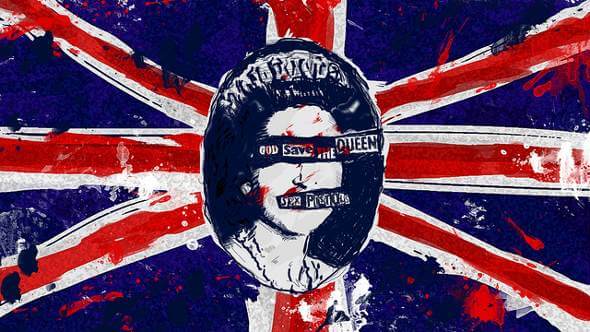Explore how web design affects conversion rates and how to optimise your website for conversions and drive measurable results for your business.
In the digital landscape, where clicks hold immense potential, web design emerges as a powerful catalyst for transforming those clicks into loyal clients. The significance of web design for conversion cannot be overstated. A well-designed website acts as the cornerstone of your digital growth, bringing together all your marketing efforts to drive higher conversions.
It involves crafting an engaging and user-centric online presence that drives visitors to take a desired action. Consistency and cohesiveness in design, messaging, and user experience are key to maximising conversions.
In this article, we will explore the importance of a well-designed website in boosting conversion rates and provide valuable tips on creating a high-converting website that aligns with your audience’s needs and desires.
Understanding Conversion and Web Design
Every aspect of your website, from the layout and navigation to the colour scheme and typography, can play a crucial role in shaping the user experience and ultimately, influencing conversion rates. For example, a cluttered and confusing layout can make it difficult for users to find what they’re looking for and discourage them from taking action, while a simple and intuitive layout can make it easy and straightforward for users to engage with your site.
But web design isn’t just about aesthetics. User experience (UX) also plays a critical role in driving conversions. By designing your site with the user in mind, you can create an experience that is not only visually appealing but also functional and intuitive.
Web Design Elements that Impact Conversion
When it comes to designing a website that drives conversions, there are a few key elements that you can’t afford to overlook. Every aspect of your site can play a crucial role in shaping the user experience and ultimately, influencing conversion rates. Here are a few things to consider:
1. Visual Design and Branding
Your website is often the first impression that a potential customer will have of your brand, so it’s essential that it looks professional, polished, and on-brand. By incorporating visual elements that align with your brand identity, you can create a cohesive and memorable user experience that sets you apart from the competition.
2. Website Speed
Website speed is another critical factor that can have a significant impact on your conversion rates. In today’s fast-paced digital world, users have little patience for slow-loading sites. If your site takes too long to load, users are likely to abandon it and seek out a faster alternative. To avoid losing potential customers, optimise your site’s speed by minimising file sizes, compressing images, and leveraging caching techniques.
3. Mobile Optimisation
With more and more users accessing the web on their mobile devices, it’s crucial that your site is optimised for a range of screen sizes and resolutions. By designing your site with a “mobile-first” approach, you can ensure that it looks and performs great on all devices, which can help improve user engagement and ultimately, drive conversions.
Conversion Optimisation Techniques in Web Design
To maximise your website’s potential for driving conversions, it’s important to incorporate conversion optimisation techniques into your web design strategy. Here are some key techniques to consider:
Understand User Behaviour and Create a User-Centred Design
To create a website that can effectively drive conversions, it’s essential to understand your users’ behaviour and design your site with their needs in mind. This means conducting research to understand their goals, preferences, and pain points. Then incorporate those insights into your site’s design and functionality. By creating a user-centred design, you can ensure that your site is intuitive, easy to use, and relevant to your target audience.
Create Effective Calls-to-Action (CTAs)
Calls-to-action (CTAs) are an essential component of any conversion optimisation strategy. These include buttons or links on your site that encourage users to take a specific action, such as “Buy Now” or “Sign Up.” To create effective CTAs, it’s important to be clear and concise about the action you want users to take, use contrasting colours and clear positioning to make the CTA stand out, and create a sense of urgency to encourage users to take action.
Use A/B Testing to Improve Conversion Rates
A/B testing is a powerful tool for improving conversion rates. It involves testing two versions of a web page (A and B) to see which one performs better in terms of driving conversions. By testing different variations of your site’s design, layout, copy, and CTAs, you can identify which elements are most effective at driving conversions and make data-driven decisions to optimise your site’s performance.
SEO and Web Design: A Powerful Combination
Search engine optimisation (SEO) and web design are two critical components of any successful online marketing strategy. While they are often approached as separate disciplines, they are in fact closely intertwined, with web design playing a crucial role in optimising a website for search engines. Here’s what you need to know:
The Impact of Web Design on Search Engine Optimisation (SEO)
Search engines like Google prioritise websites that are fast, easy to use, and mobile-friendly. This means a well-designed website that provides a great user experience is more likely to rank well in search engine results pages (SERPs). Additionally, web design elements like site structure, navigation, and internal linking can also impact a site’s SEO by making it easier for search engines to crawl and index content.
The Impact of SEO on Conversion Rates
While web design is crucial for creating a website that can drive conversions, SEO is equally important for driving traffic and ensuring that your site reaches the right audience. By optimising your site for the keywords and phrases that your target audience is searching for, you can attract more qualified traffic to your site and increase the likelihood of converting those visitors into customers. By continually monitoring and improving your site’s SEO performance, you can ensure that your site is always visible to potential customers and positioned to drive results.
Final Thoughts
Web design is a critical component of building a strong brand identity, increasing conversions, and optimising for search engines. Effective web design can impact user experience, improve site speed, and enhance mobile optimisation to drive conversions. So if you want to create a website that can truly drive conversions, be sure to pay attention to these key insights.
Guest Post by Lee Rutten
From Strong Digital, expert Brisbane Web Designers
Lee is the Digital Account Manager at Strong Digital. With a genuine enthusiasm for assisting clients in their online endeavours, Lee has worked with startups and international brands spanning diverse industries like fitness, ecommerce, and professional services.



